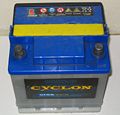 Energy Daily: Plans to make business pay for carbon permits previously distributed for free in the European Union’s carbon-trading system could hurt the bloc’s energy industry, the chief executive of Shell said in an interview released Monday.
Energy Daily: Plans to make business pay for carbon permits previously distributed for free in the European Union’s carbon-trading system could hurt the bloc’s energy industry, the chief executive of Shell said in an interview released Monday.
“In the past 20 years the refining industry in Europe has been very difficult,” Jeroen van der Veer, the Anglo-Dutch oil giant’s boss, told The Times in an early edition of its Tuesday paper. “But if we have additional penalties because we move away from a system of free allocations to a large extent, then in such a marginal industry that is a real problem.”
EU leaders hope to enact a plan to meet the bloc’s goal of reducing emissions of carbon dioxide — the main gas reponsible for global warming — by 20 percent by 2020, compared to 1990 levels. A widespread concern among Europeans, though, is the possibility of so-called carbon leakage, whereby heavy industry migrates out of Europe to cheaper, less-regulated countries, taking the pollution and the jobs with them…
Shown here: Shell’s Anacortes refinery in Puget Sound, photo by Walter Siegmund, Wikimedia Commons under the terms of the GNU Free Documentation license.



 Posted by torcuil
Posted by torcuil 







You must be logged in to post a comment.